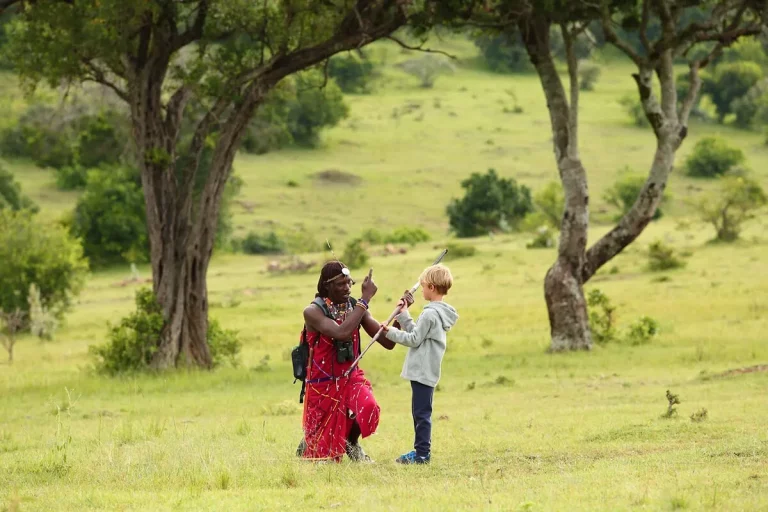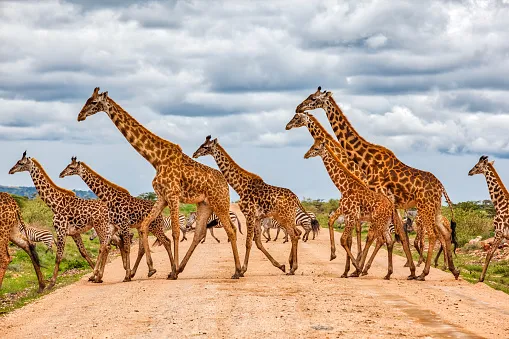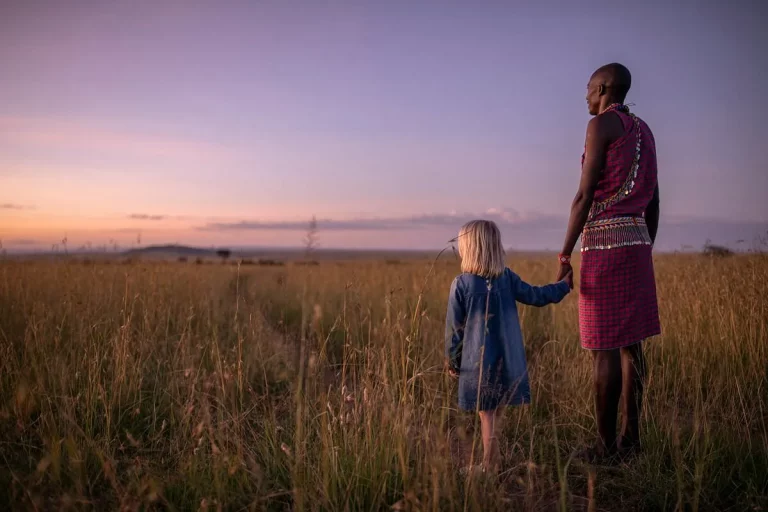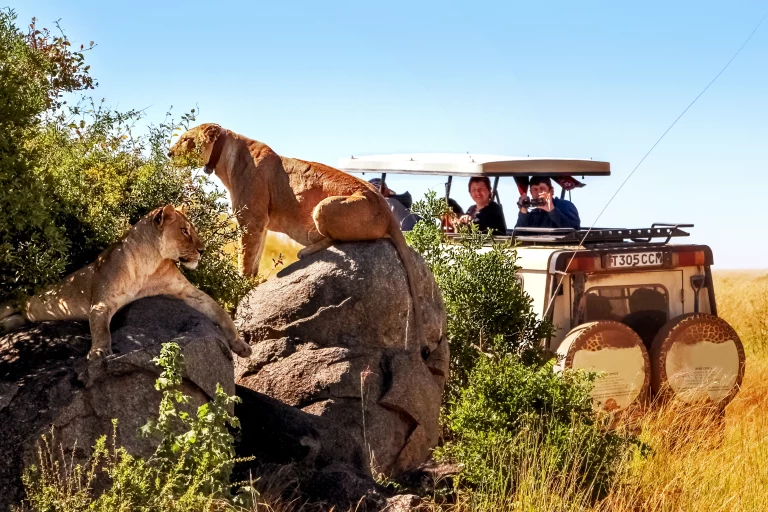The Best Guide to Ol Pejeta Conservancy
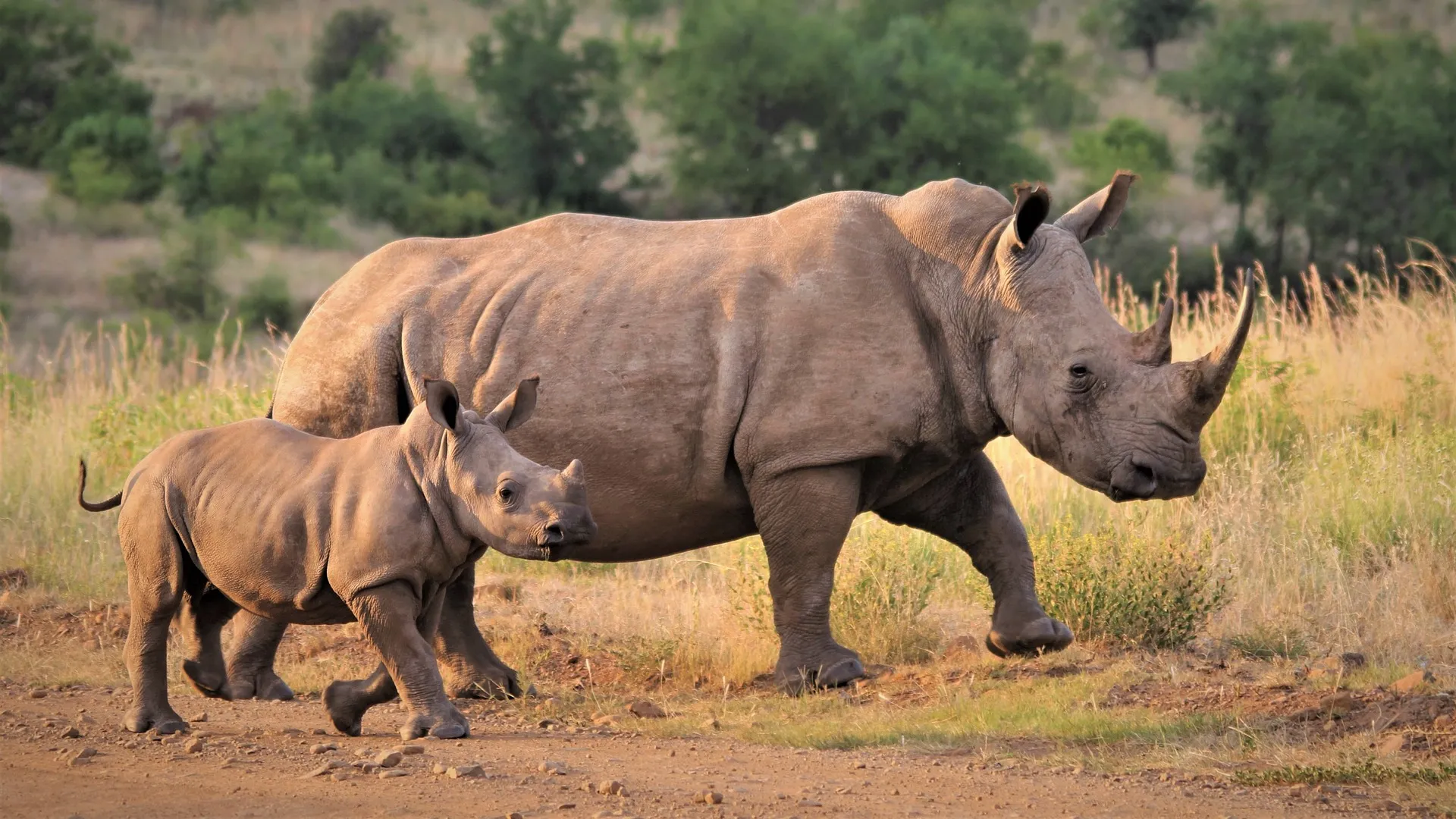
The Ol Pejeta Conservancy in Kenya is not just a destination- it’s a beacon of hope and a living testament to the power of conservation. In this article, we will delve into what makes Ol Pejeta Conservancy a must-visit destination, from its critical role in safeguarding the last northern white rhinos to the thrilling array of activities and unique experiences it offers. Whether you’re an avid wildlife enthusiast or a curious traveler seeking to connect with nature, this guide will provide you with everything you need to know for an unforgettable adventure in one of Kenya’s most treasured conservation areas.
Why You Should Visit the Ol Pejeta with Us
Embark on an unforgettable journey to Ol Pejeta Conservancy with us and experience the very best of Kenya’s wildlife and conservation efforts. Our expert-guided tours ensure you gain unparalleled access to the conservancy’s remarkable features, from close encounters with the northern whites to exhilarating game drives and unique activities like lion tracking. With our seamless planning and commitment to exceptional service, your visit will be both enriching and unforgettable.
A Look at Some of Our Most Booked Safari Packages
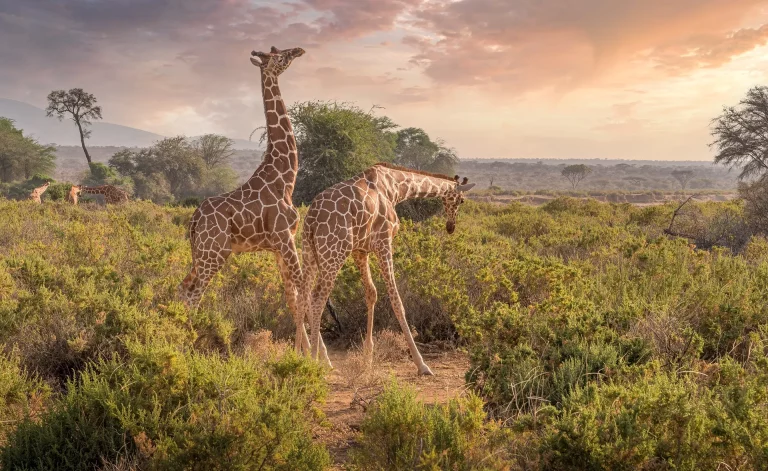
3-Days Safari with a Stay at Jambo Mara Safari Lodge
From £718
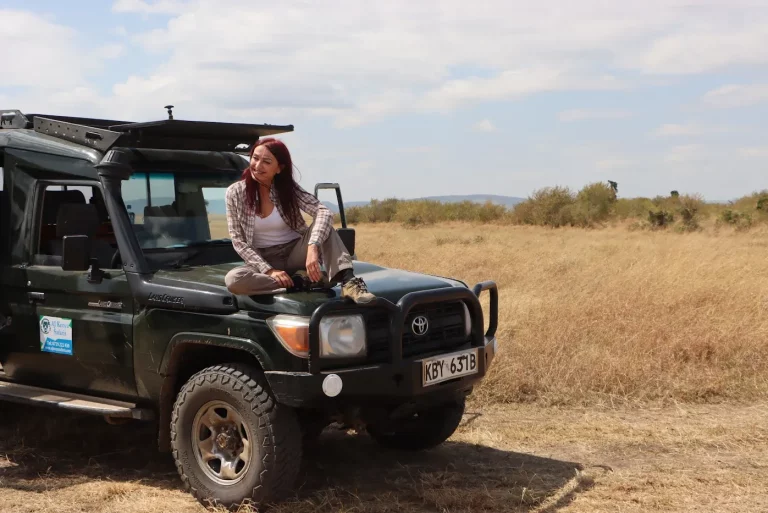
Kenya Itinerary 10 Days. OlPejeta-Samburu-Masai Mara
From £3650
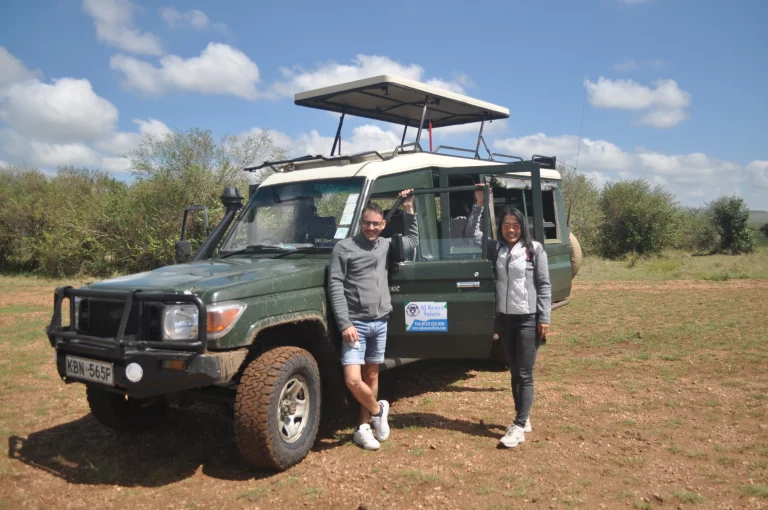
Blissful, 4-Day Keekorok Lodge Masai Mara Safari
From £1,024
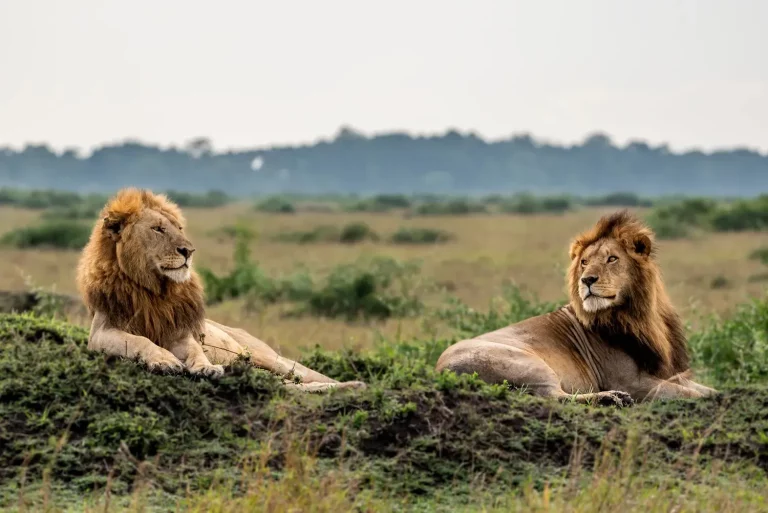
Just the Vacation You Need - 4 Days at Base Camp Masai Mara
From £933
Video Overview: Ol Pejeta Conservancy
Executive Summary
- Explore Ol Pejeta Conservancy in central Kenya, a renowned wildlife sanctuary that houses some of the world’s most endangered wildlife species, including the last two northern white rhinos.
- Discover the diverse activities available at the conservancy, from thrilling safari drives to unique experiences like lion tracking and night safaris.
- Learn about the various accommodation options within Ol Pejeta, catering to different preferences and budgets.
- Gain insights into the conservancy’s conservation efforts and how it supports both wildlife protection and local development.
Discovering Ol Pejeta Conservancy
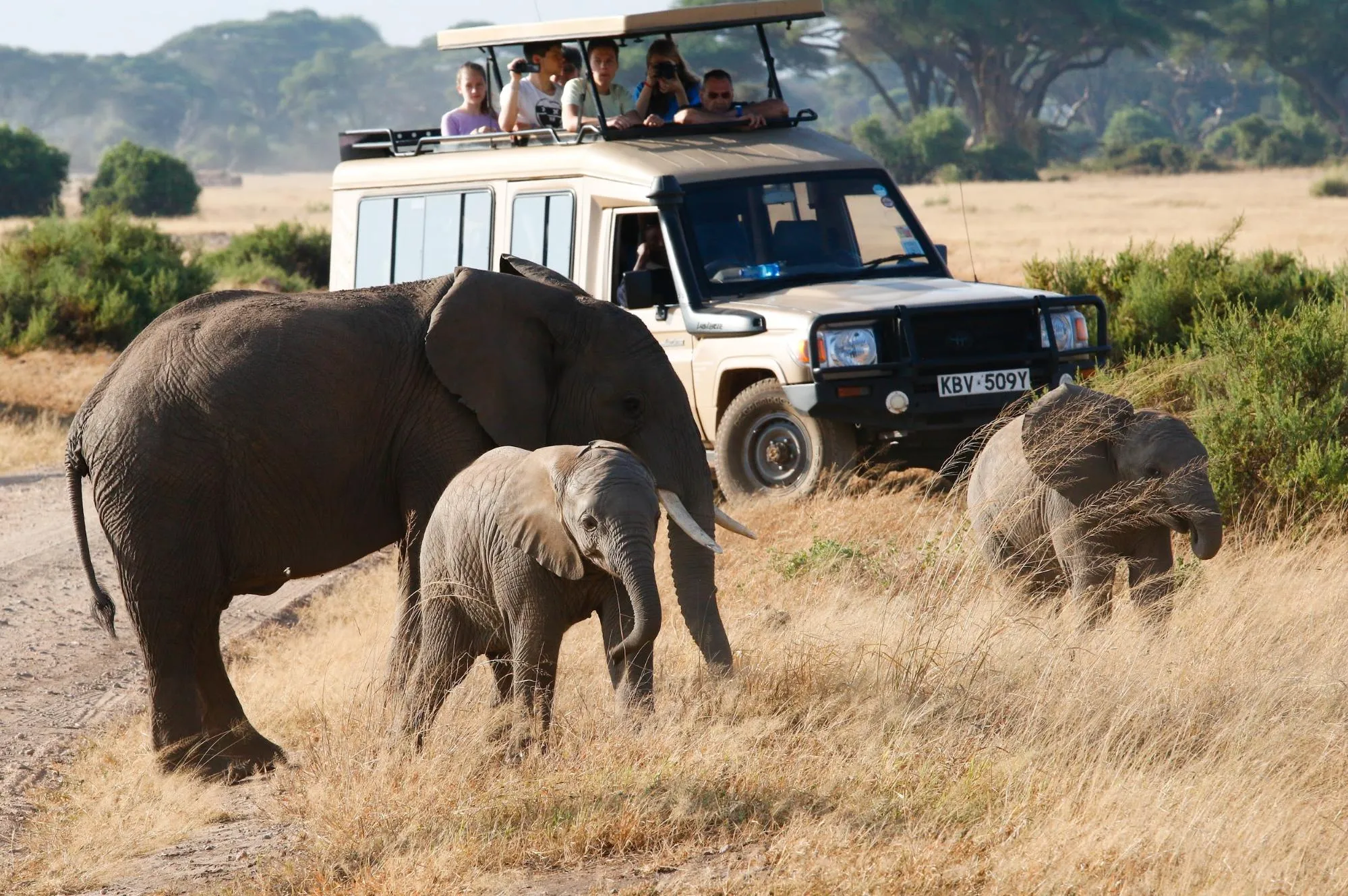
Ol Pejeta Conservancy is a gem located in Central Kenya’s Laikipia County, near the magnificent Mount Kenya. This wildlife conservancy is more than just a place to observe animals; it is a crucial sanctuary for endangered species. Why? Beacause in this Kenyan park, you’ll discover the largest population of endangered black rhinos in East Africa. You’ll also discover over 95 mammal species, including the Jackson’s hartebeest, elephant, the wild dog, and the Grevy’s zebra.
Beyond the wildlife, Ol Pejeta is blessed with some of the most breathtaking sceneries in the country. Whether it’s the expansive landscapes or the proximity to Mount Kenya, every aspect of Ol Pejeta enhances the visitor experience, making it a must-visit for anyone passionate about wildlife and conservation.
Home to the Last Northern White Rhinos
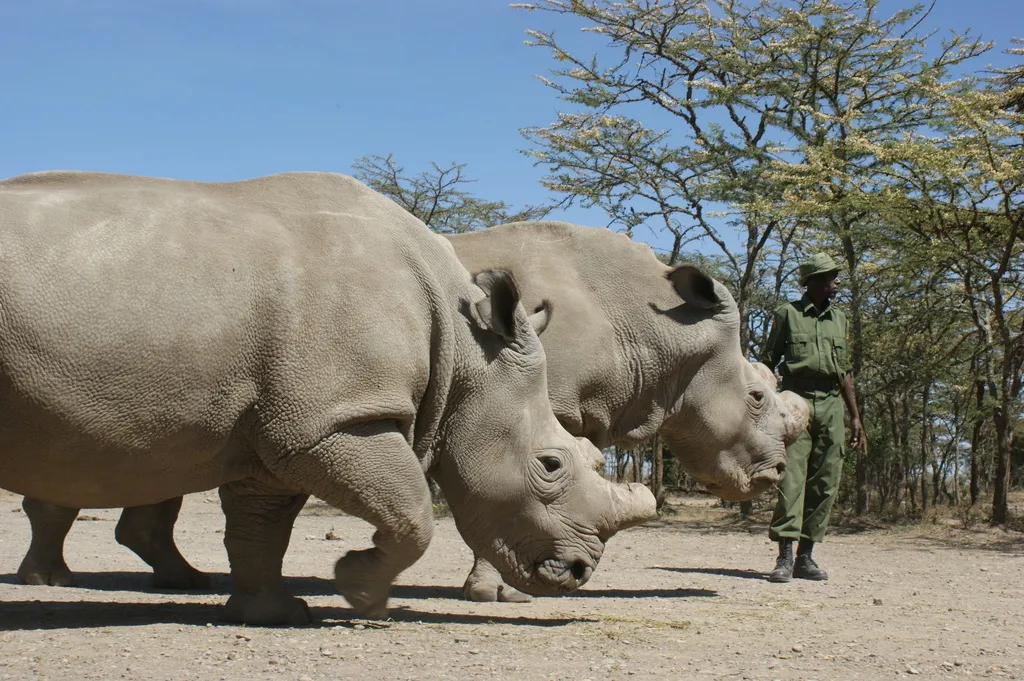
In the vast expanse of Ol Pejeta Conservancy, two northern white rhinos, Najin and Fatu, live under constant protection. These rhinos are the last of their kind, making Ol Pejeta an essential location for global conservation efforts. The plight of the remaining northern white rhino is a poignant reminder of the devastating effects of poaching, which has reduced their numbers from over 2,000 to just two.
However, the conservancy is at the forefront of innovative conservation techniques, including the extraction of immature egg cells and the creation of viable embryos through in-vitro fertilization. These efforts have resulted in 29 viable embryos, a beacon of hope for the future of the species. Conservationists are also exploring cross-breeding with the southern white rhino to preserve the genetic lineage.
Witnessing these majestic creatures is a deeply moving experience for visitors, underscoring the importance of protecting wildlife species for future generations.
Getting to Ol Pejeta Conservancy
Reaching Ol Pejeta Conservancy is straightforward, with several travel options to suit different preferences. Located approximately 217 kilometers from Nairobi, visitors can easily travel by road, a journey that typically takes around four to five hours. The well-maintained roads make the drive comfortable and allow for scenic views along the way.
Flights from Nairobi to Nanyuki Airstrip are available for those who prefer air travel, followed by a short drive to the conservancy. There’s also the option of private transfers and taxi services from Nanyuki, which ensure a smooth and convenient journey. Additionally, bus services operate routes from Nairobi to Nanyuki, catering to travelers who prefer public transportation.
Best Times to Visit the Ol Pejeta Conservancy
The Ol Pejeta Conservancy welcomes visitors year-round, but each season offers unique experiences. Whether you prefer the clear skies and lush landscapes of early in the year or the peak wildlife viewing opportunities in mid-year, planning your visit according to the season can enhance your experience.
January – March
The beginning of the year is marked by clear skies and vibrant landscapes, making it an ideal time for photography and wildlife spotting. January and February are particularly favorable due to the dry spell, providing excellent visibility of wildlife before the arrival of the heavier rains in March. With temperatures averaging around 27°C (81°F) in February, the weather is pleasant and conducive to outdoor activities.
As mid-March approaches, lighter rainfall begins, but the conditions still remain favorable for visitors. This period offers stunning scenery and a chance to see flocks of white storks, making January to March a prime time to experience Ol Pejeta Conservancy’s natural beauty.
April – June
April to June is characterized by the long rainy season, with April generally receiving the heaviest rainfall. Despite the rain, this period offers adventurous game drives and lower accommodation rates, attracting those who seek a more intimate experience with fewer crowds.
The lush, green landscapes during this time provide a different but equally captivating perspective of the conservancy.
July – September
The months of July to September are considered the peak season for wildlife viewing at the Ol Pejeta Conservancy. During this period, visitors have excellent chances to see the Big Five animals: lions, elephants, leopards, rhinoceros, and buffalo. The dry conditions make it easier to spot animals around waterholes, creating thrilling safari experiences.
In August, occasional afternoon showers can enhance the beauty of the landscape. These months are perfect for those who want to experience the conservancy at its best, with abundant wildlife and spectacular scenery.
October – December
From October to December, the climate at the Ol Pejeta Conservancy is cooler, with highs of 24°C and lows of 9°C, offering a comfortable environment for wildlife spotting. Fewer tourists during this period make it easier to observe animals in their natural habitat. Cheetahs are particularly visible during these months, as they use the taller grass for hunting.
The quieter tourist season allows for more personalized and less crowded experiences. The landscape remains beautiful, and the cooler temperatures make it a pleasant time to explore the conservancy.
Unique Activities at Ol Pejeta Conservancy
Ol Pejeta Conservancy offers a variety of unique activities that cater to adventure-seekers and conservation enthusiasts alike. From traditional game drives and guided bush walks to more specialized experiences like lion tracking and night game drives, the ol pejeta conservancy works to ensure there is something for everyone to enjoy.
Lion Tracking
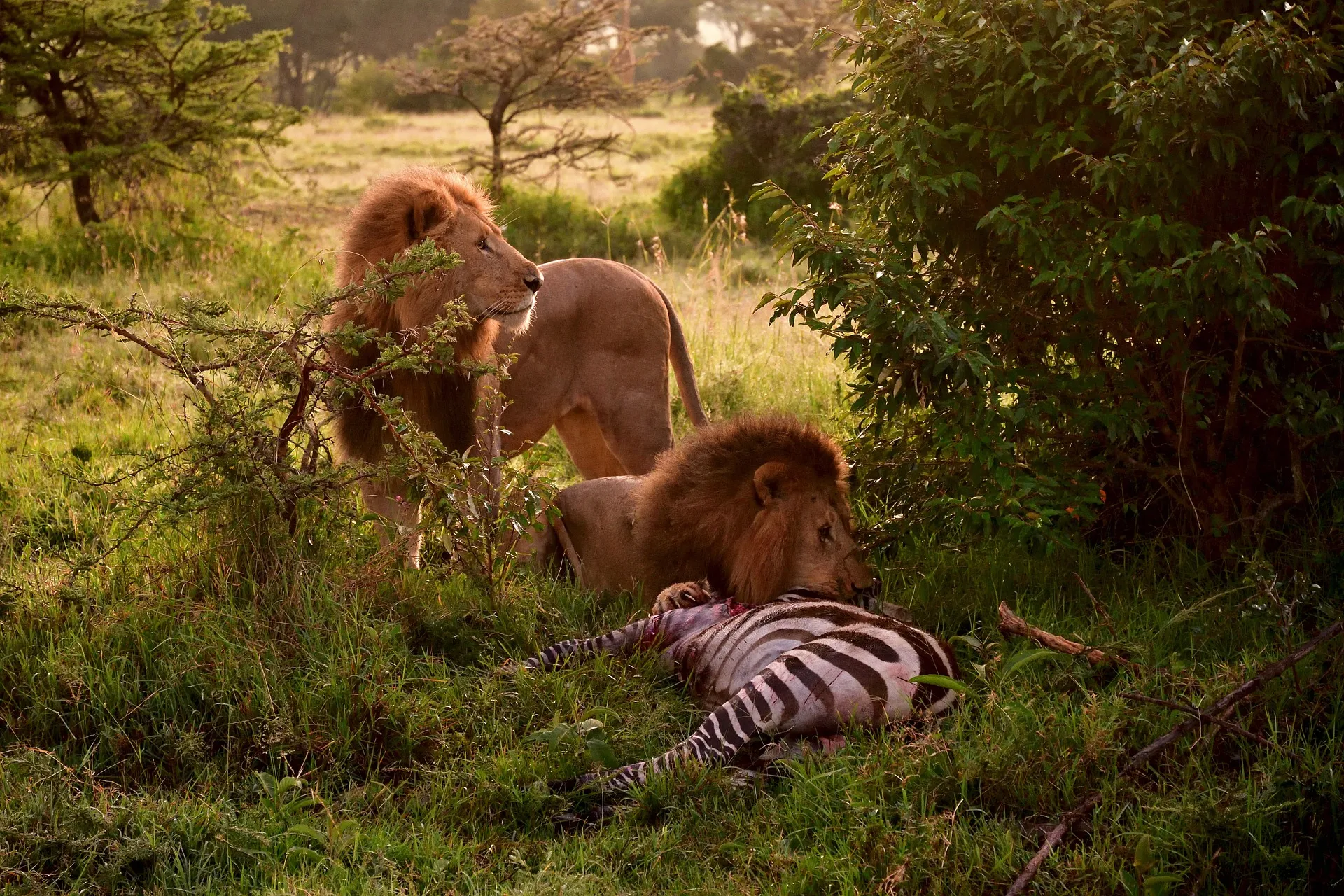
One of the most thrilling Ol Pejeta Conservancy activities is lion tracking, which supports vital conservation projects and ecological monitoring. These excursions, operational from 06:30h to 09:30h and 15:30h to 18:30h, allow visitors to join rangers in tracking these magnificent big cats. Not only does this activity provide an adrenaline rush, but it also offers insights into the behavior and movements of lions, contributing to their conservation.
Tracking also provides visitors with a deeper understanding of conservation challenges and triumphs. It’s an unforgettable experience that combines adventure with a meaningful cause, making it a highlight of any visit to the Ol Pejeta Conservancy.
Dog Tracking
Dog tracking at the Ol Pejeta Conservancy offers a unique and interactive way to engage with conservation efforts. Visitors can try to evade the highly trained anti-poaching dogs and see if they can be found.
This activity not only provides a fun challenge but also helps enhance the anti-poaching skills of the dogs through practical application.
Night Game Drives
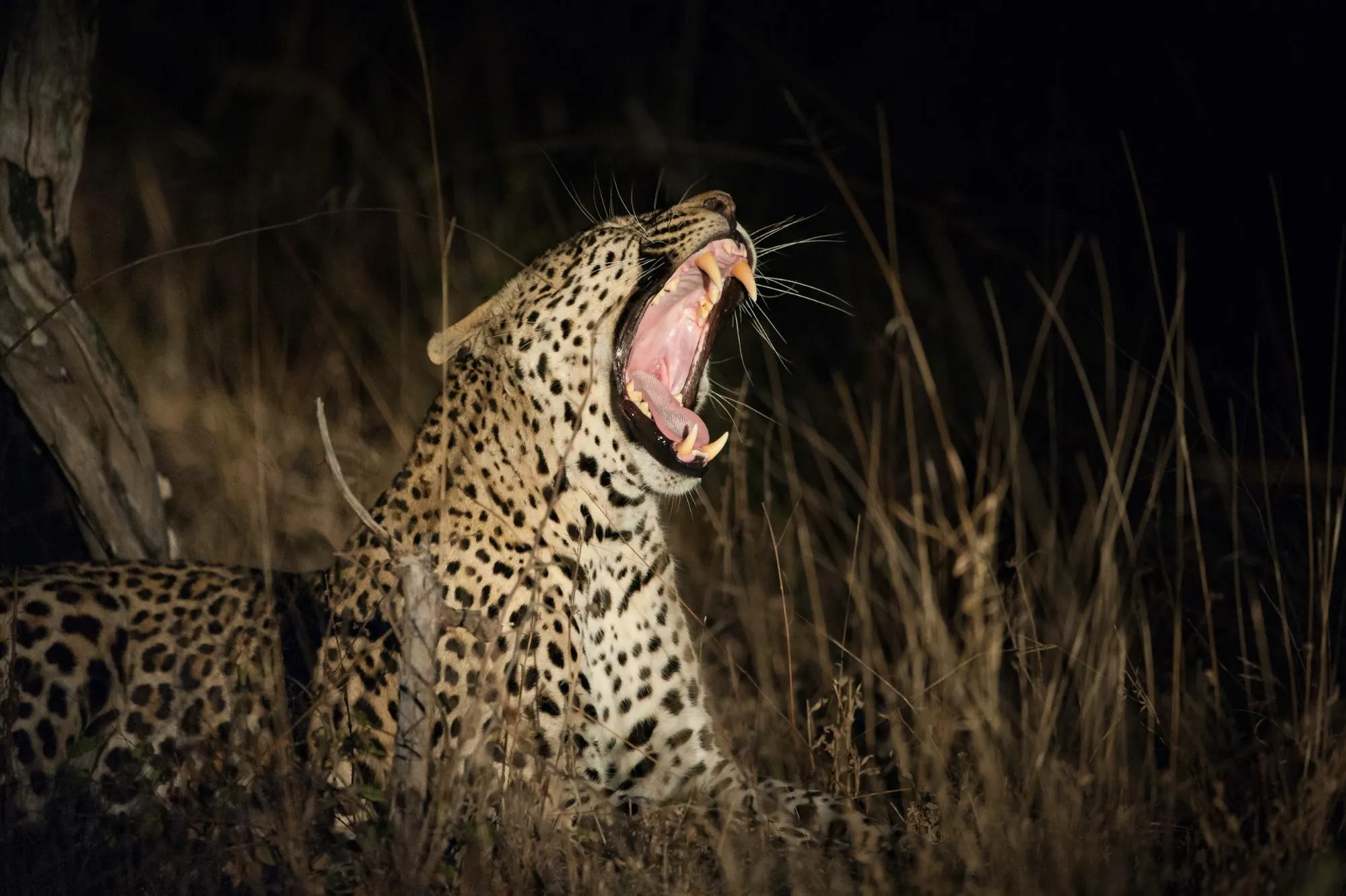
Night game drives at Ol Pejeta provide an exhilarating opportunity to explore the conservancy after dark. These drives reveal the nocturnal side of the park, where visitors might encounter unique animals such as aardvarks, zorillas, and bat-eared foxes. The thrill of discovering the park’s nightlife and observing the behaviors of nocturnal creatures creates an unforgettable safari experience.
These night drives offer a different perspective on the wildlife and environment, making them a must-do for any adventurous visitor. The chance to see animals that are rarely active during the day adds an element of surprise and excitement to the safari.
Horse Rides
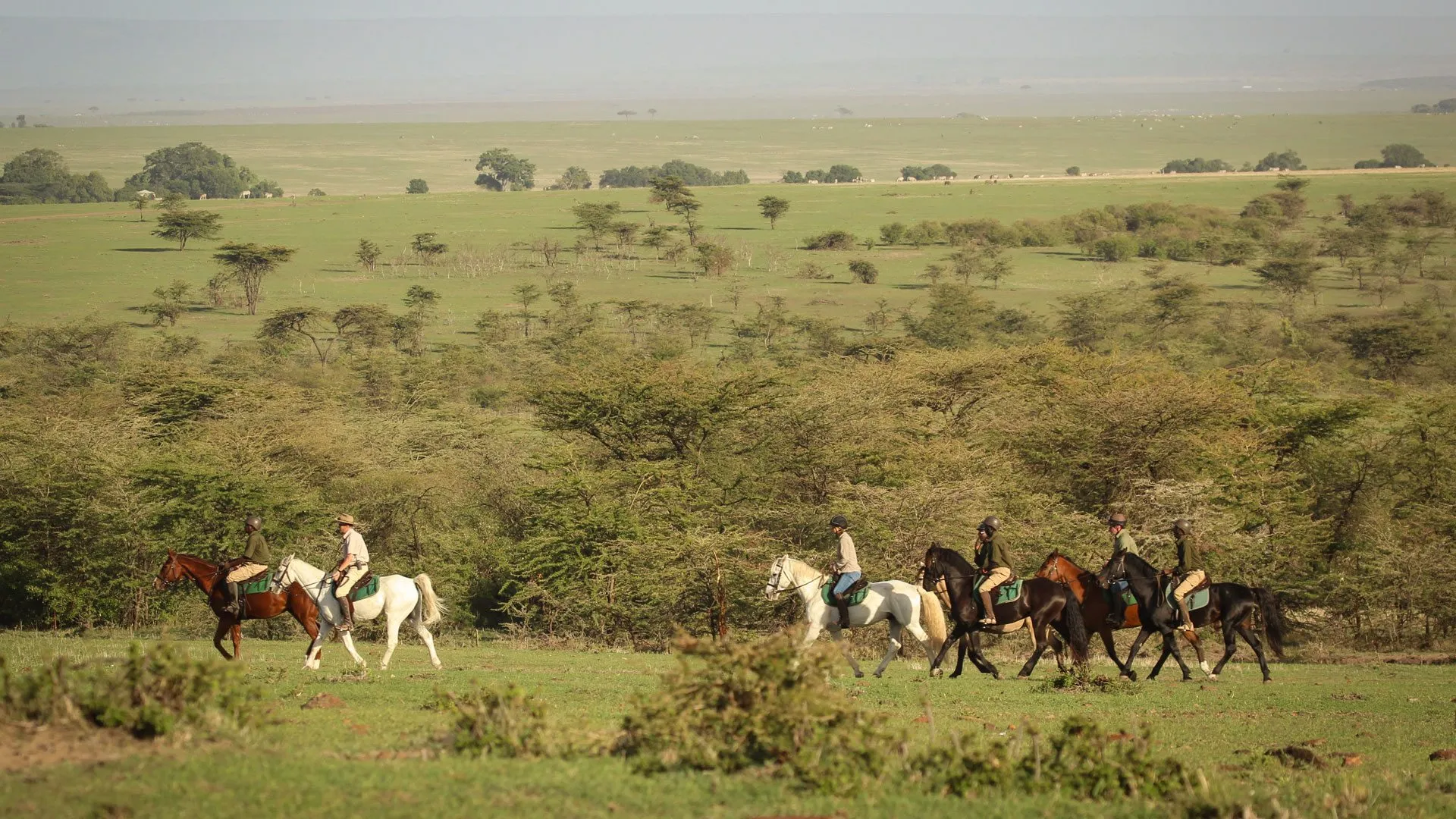
Discover the thrill of horse rides in Ol Pejeta, a unique way to explore the vast landscapes and get up close to the incredible wildlife. These rides offer an unparalleled experience, allowing you to traverse the conservancy’s stunning terrains while enjoying the sights and sounds of nature. As you ride through the open plains, keep an eye out for the rare and majestic black rhino, a sight that’s both humbling and exhilarating.
For those seeking even more adventure, Ol Pejeta offers even camel rides, providing a different perspective of the conservancy’s beauty. Whether you choose to explore on horseback or atop a camel, the experience is bound to be unforgettable, offering a rare opportunity to connect with nature in one of Kenya’s most treasured conservation areas.
Sweetwaters Chimpanzee Sanctuary
The Sweetwaters Chimpanzee Sanctuary within Ol Pejeta Conservancy is a remarkable haven for orphaned chimpanzees. Established in partnership with The Jane Goodall Institute and Kenyan Wildlife Services, the sanctuary provides a natural environment resembling the chimpanzees’ wild habitat. This sanctuary is the only place in Kenya where visitors can see non-indigenous chimpanzees in such a setting, making it a unique and educational experience.
Home to 40 chimpanzees, the sanctuary is situated on an island, ensuring the safety and well-being of the primates. Visitors can access the chimpanzees only via boat, adding an element of adventure to the visit.
The sanctuary plays a crucial role in primate conservation, offering a safe haven for these endangered animals while educating the public about their plight and how important it is to conserve wildlife.
Conservation Efforts and Community Development
Ol Pejeta Conservancy is a not-for-profit entity dedicated to wildlife and community conservation. As a leader in the reserve league, Ol Pejeta sets a high standard for innovative conservation strategies, particularly in rhino protection and broader wildlife preservation. The conservancy’s efforts are crucial not only for the northern white rhino but also for broader conservation initiatives, including sustainable cattle ranching, which plays a vital role in maintaining the balance between wildlife and livestock.
Moreover, Ol Pejeta’s conservation programs also help generate income for local communities, ensuring that the benefits of conservation are shared widely. By investing in health, education, water, roads, agriculture, livestock services, and conservation tourism, the conservancy fosters a sustainable relationship between conservation and human development. This approach not only supports local livelihoods but also enhances the overall success of conservation efforts.
Accommodation Options at Ol Pejeta
The Ol Pejeta Wildlife Conservancy offers nine distinct lodging options, catering to various preferences and budgets. From luxurious tented camps to budget-friendly homestays, the conservancy ensures that every visitor can find suitable accommodation. Each option provides a unique experience, allowing guests to immerse themselves in the beauty and tranquility of the natural surroundings.
Ol Pejeta Bush Camp
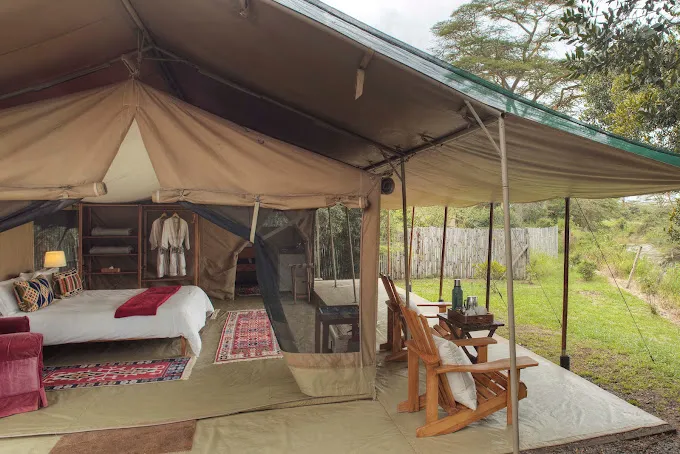
Ol Pejeta Bush Camp is designed to provide an eco-friendly experience while allowing guests to be close to wildlife. This camp offers nine spacious tents, each equipped with modern amenities, ensuring a comfortable stay with minimal environmental impact. The camp’s location along the Ewaso Ngiro River provides a tranquil environment, perfect for families seeking a serene getaway.
Porini Rhino Camp
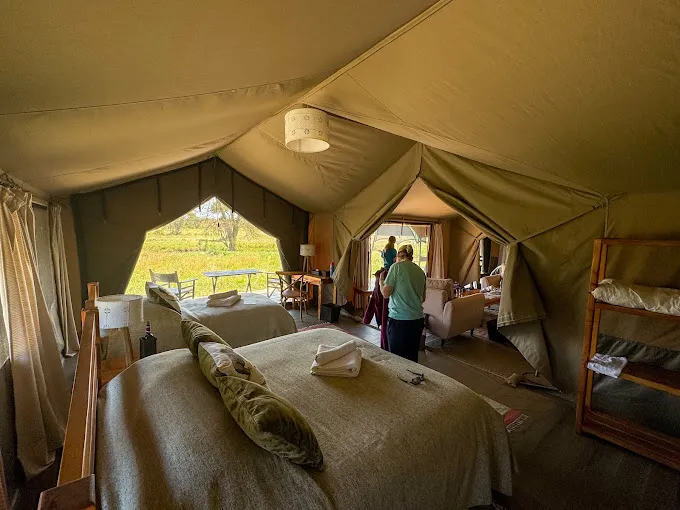
Porini Camp is another excellent accommodation option at Ol Pejeta, designed to blend seamlessly with nature. This camp features nine guest tents and prioritizes wildlife conservation and eco-friendly practices. Guests at Porini Camp can enjoy the tranquility of the Laikipia Plateau while contributing to the conservancy’s conservation efforts.
The camp’s dedication to sustainable wildlife management makes it a perfect choice for eco-conscious travelers.
Other Noteworthy Camps in the Ol Pejeta Include;
- The Pelican House
- Kicheche Laikipia Camp
- Sweetwaters Serena Camp
- Ol Pejeta Safari Cottages
Entry Fees and Booking Information
Visitors to Ol Pejeta Conservancy need to pre-book to receive discounted rates for student groups, which must consist of at least 10 students. Groups arriving without a pre-booking reference will be charged the standard daily entrance fee. For student groups, two accompanying teachers can enter the conservancy at no charge.
Visitors can contact the conservancy directly via email or phone for inquiries and bookings. Pre-booking ensures a smoother experience and helps the conservancy manage visitor numbers, contributing to the conservation efforts.
Summary
Ol Pejeta Conservancy is not just a wildlife sanctuary but a beacon of hope for endangered species and a model for sustainable conservation. From its critical role in protecting the last northern white rhinos to its pioneering rhino monitoring initiatives and innovative community development programs, Ol Pejeta exemplifies the harmony between human and wildlife coexistence. A visit to this remarkable conservancy promises unforgettable experiences, profound insights into conservation, and a deep connection with nature.
Frequently Asked Questions
In this section, we answer all your Ol Pejeta related questions
How can I get to Ol Pejeta Conservancy?
You can reach Ol Pejeta Conservancy by driving from Nairobi, which is about 217 kilometers and takes roughly four to five hours. Alternatively, you can fly to Nanyuki Airstrip from Nairobi and then take a short drive to the conservancy.
What is the best time of year to visit Ol Pejeta?
The best time to visit Ol Pejeta is from July to September for peak wildlife viewing, though January to March also offers great conditions for photography and spotting due to clear skies. Choose based on your priorities for the experience.
What unique activities are available at Ol Pejeta?
Ol Pejeta offers unique activities like lion tracking, dog tracking, and night drives, providing visitors with immersive experiences of its wildlife and nocturnal environment. These activities allow for a deeper appreciation of the conservancy’s diverse fauna.
Are there accommodations available within Ol Pejeta Conservancy?
Yes, Ol Pejeta Conservancy provides diverse accommodation options including luxury tented camps and budget-friendly homestays, ensuring a comfortable experience in nature.
What are the entry fees for visiting Ol Pejeta?
The entry fees for visiting Ol Pejeta vary, and it’s advisable to pre-book for possible discounts, especially for student groups. For precise rates and booking information, please contact the conservancy directly.

